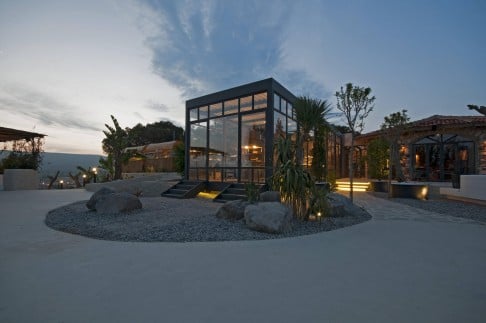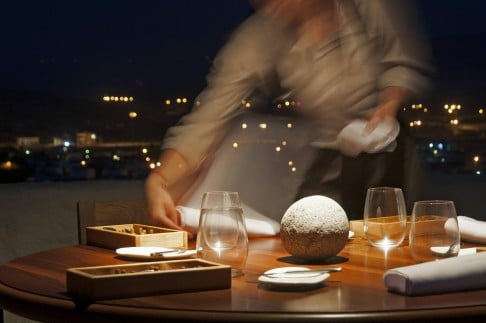
Located in the village of Alacati (top), in western Turkey, Alancha (below) is the ambitious year-old restaurant of chef Kemal Demirasal, a Bosnian Turk who uses lesser known ingredients from the Cesme Peninsula to cleverly divulge the history of Anatolia in nightly degustation menus. He uses wild herbs foraged from hilltop forests, tart cheeses made from the milk of hardy mountain goats, nutty olive oils from 1,000-year-old trees and an abundance of fish from the cobalt-blue Aegean Sea. Even the wines are local; Demirasal showcases endemic grape varieties such as karasi, which produces a leathery full-bodied red for which local winery Urla recently picked up a Decanter magazine best forgotten grape award.

It is, a little, but it's also extremely well done, like well-thought-out theatre that feeds you, too. The Anatolian tasting menu, on this occasion called "The Great Migration", focuses on the cultures and empires that have influenced Anatolia through its 8,000-plus-year human history. The Minoan civilisation, which originated in Crete, Greece, and settled in Cesme, is represented by octopus and fish with zucchini and yogurt served in a porcelain dish custom made to mimic marble. "Seeds of Civilisation" mixes barley, chickpea, yogurt and mint; food that helped the citizens of Anatolia make the transition from Palaeolithic to Neolithic 10 to 12 millennia ago. "Empire Built on Salt" is a tribute to the Phoenicians and their contribution to the salt trade. The baked seabass filleted table side is as soft as butter and perfect with tart semi-fermented sea leaves.

Whether you do or you don't, take a seat at the bar and be entertained by resident "cooktail master" Goksel Gulec, who uses everyday cooking techniques and ingredients to create concoctions such as 4G, with gin, ginger and lychee, and Hot Kiss, with roses and champagne. Gulec's cocktail-making skills are as impressive as the view from the bar, which takes in rolling, low-slung hills covered in pine and almond trees.
This former windmill is now an angular glass structure with an open kitchen and indoor tables that can seat 30 people. In summer, expect to dine under the stars, and there's a bonfire around which after-dinner home-made schnapps and trays of petit fours are taken.